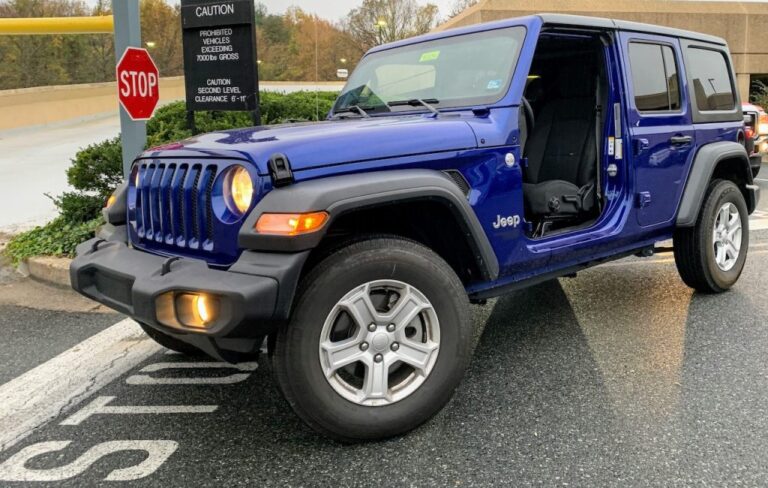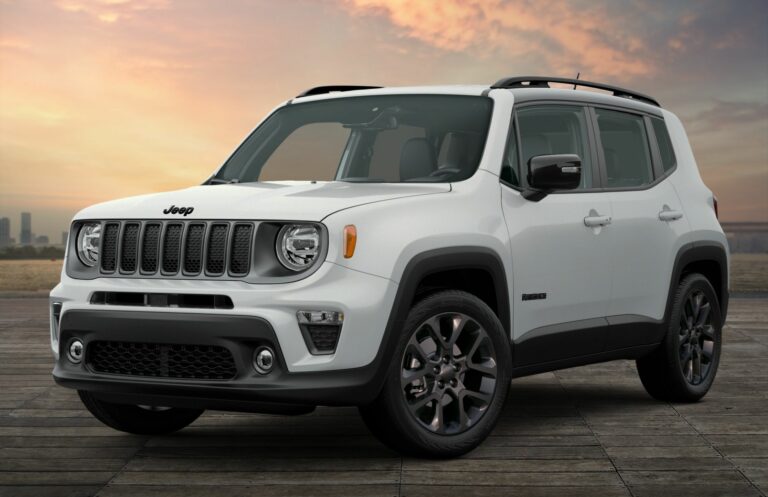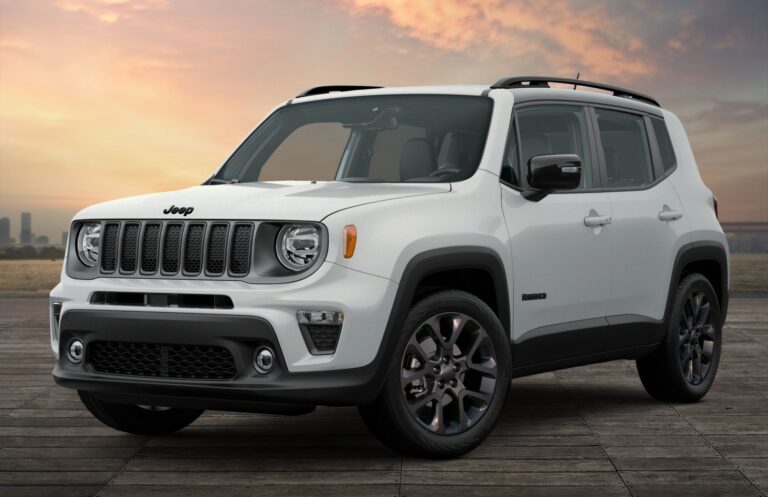93-98 Jeep Grand Cherokee For Sale: Your Comprehensive Guide to ZJ Ownership
93-98 Jeep Grand Cherokee For Sale: Your Comprehensive Guide to ZJ Ownership jeeps.truckstrend.com
For a select group of automotive enthusiasts and off-road adventurers, the 1993 to 1998 Jeep Grand Cherokee, affectionately known by its chassis code "ZJ," isn’t just an old SUV; it’s a timeless icon. Bridging the gap between the rugged utility of the Cherokee XJ and the burgeoning luxury SUV market, the ZJ Grand Cherokee carved out a unique niche, offering a compelling blend of capability, comfort, and classic Jeep styling. Today, these venerable machines are readily available on the used market, presenting an enticing opportunity for those seeking an affordable, capable, and highly customizable vehicle. Whether you’re a seasoned off-roader looking for a new project, a budget-conscious buyer in need of reliable transportation, or simply someone captivated by the ZJ’s enduring appeal, this comprehensive guide will equip you with the knowledge needed to navigate the world of 93-98 Jeep Grand Cherokee for sale.
Why the 93-98 ZJ Grand Cherokee Endures
93-98 Jeep Grand Cherokee For Sale: Your Comprehensive Guide to ZJ Ownership
The ZJ generation was revolutionary for Jeep. It introduced a unibody construction for a smoother ride, while retaining solid axles front and rear, a hallmark of serious off-road capability. This combination allowed it to excel both on the pavement and on the trail, a characteristic that modern SUVs often struggle to balance. Its relatively compact size, robust powertrain options, and legendary aftermarket support have cemented its status as a cult classic. Owners appreciate its mechanical simplicity, which makes DIY repairs and modifications feasible, and its distinctive, no-nonsense aesthetic that stands apart from today’s often-over-styled vehicles. The ZJ isn’t just a vehicle; it’s a testament to a bygone era of automotive engineering where capability and durability were paramount.
Understanding the ZJ Trim Levels and Powertrains
Before diving into the market, it’s crucial to understand the various configurations of the ZJ to determine which best suits your needs.
Engines: The Heart of the ZJ
- 4.0L High Output (HO) Inline-Six (I6): This legendary engine is arguably the most common and sought-after. Known for its incredible durability, strong low-end torque, and relatively simple design, the 4.0L HO is a workhorse. It’s the go-to choice for those prioritizing reliability, ease of maintenance, and decent fuel economy (for an SUV of its era).
- 5.2L (318 Magnum) V8: Offering a significant bump in power and smoothness over the 4.0L, the 5.2L V8 provides a more relaxed driving experience, especially on the highway. It’s a robust engine, though it can be prone to plenum gasket issues and is slightly less fuel-efficient than the I6.
- 5.9L (360 Magnum) V8: Available only in the rare 1998 5.9 Limited model, this engine is the pinnacle of ZJ performance. With 245 horsepower and 345 lb-ft of torque, it offers exhilarating acceleration. However, its rarity, increased fuel consumption, and specific maintenance requirements (such as unique cooling and exhaust components) make it a niche choice, often commanding a higher premium.
![]()
Transmissions: Mostly Automatic
Almost all ZJs came with automatic transmissions.
- 42RE (4.0L): A reliable four-speed automatic, generally robust when properly maintained.
- 46RH/RE (5.2L/5.9L): Stronger four-speed automatics designed for the V8’s increased torque.

A rare few early 4.0L models might be found with a 5-speed manual (AX-15), but these are exceptionally scarce.
Transfer Cases: Key to 4WD Capability
The ZJ offered several transfer case options, dictating its 4WD functionality:

- NP231 Command-Trac: A part-time 4WD system, meaning it should only be used on loose surfaces (dirt, snow, mud) to prevent drivetrain binding. It offers 2WD, 4-High, and 4-Low. Simpler and very robust.
- NP242 Selec-Trac: A highly versatile system offering 2WD, full-time 4WD (for road use), part-time 4WD, 4-High, and 4-Low. This is often considered the most desirable transfer case for a balance of on-road safety and off-road capability.
- NP249 Quadra-Trac: A full-time 4WD system primarily. It uses a viscous coupler to distribute power, which allows it to be used on pavement. However, the viscous coupler is a known weak point and can fail, leading to binding or a lack of power to the front wheels. Many owners swap this out for an NP231 or NP242 if failure occurs.
Trim Levels: From Basic to Premium
- Base/SE: Basic models, often with fewer power options and cloth interiors.
- Laredo: A popular mid-range trim, offering a good balance of features, often with power windows/locks, air conditioning, and a variety of optional extras.
- Limited: The top-tier trim, boasting leather upholstery, premium sound systems, wood grain accents, and more standard features like heated seats (later models) and automatic climate control.
- Orvis: A special edition (1995-1997) based on the Limited, featuring unique green paint, saddle leather with plaid inserts, and specific badging.
- 5.9 Limited: The performance-oriented halo model of 1998, featuring the 5.9L V8, unique hood vents, mesh grille, upgraded exhaust, and a more luxurious interior.
What to Look For: Critical Inspection Points Before Buying
Buying an older vehicle like a ZJ requires a thorough inspection. While they are robust, years of use and neglect can take their toll.
-
Rust: This is the primary killer of ZJs, especially in regions that use road salt.
- Rocker Panels: Check thoroughly, both inside and out.
- Floorboards: Especially under the carpet.
- Frame Rails: The unibody "frame" rails are susceptible, particularly near the control arm mounts.
- Rear Shock Mounts: A common rust-through point.
- Wheel Wells and Quarter Panels: Look for bubbling paint or holes.
-
Powertrain:
- Engine Leaks: The 4.0L is notorious for rear main seal, valve cover, and oil pan gasket leaks. While common, excessive leaking warrants concern. V8s can suffer from plenum gasket leaks (burning oil smell, excessive oil consumption) and cooling system issues (check radiator, water pump, fan clutch).
- Transmission: Check fluid color (should be red, not brown or black) and smell (not burnt). Test all gears, including reverse. Listen for clunking or delayed shifts.
- Transfer Case: Ensure smooth engagement of all 4WD modes. For NP249, do tight circles in a parking lot; if it binds or hops, the viscous coupler is likely failing. Listen for grinding or whining.
- Axles/Differentials: Check for fluid leaks at the differential covers and pinion seals. Listen for humming or whining, which could indicate worn gears or bearings. Inspect U-joints for play.
-
Suspension and Steering:
- Bushings: Worn control arm bushings are common and lead to clunks and poor handling.
- Ball Joints/Tie Rods: Check for play.
- Steering Box: Excessive play in the steering wheel (beyond an inch or two) indicates a worn steering box or linkage components.
- Shocks: Look for leaks or excessive bouncing.
-
Electrical System:
- Power Windows: Test all windows; motors and regulators can fail.
- HVAC Blend Door: A common failure point where the blend door motor breaks, leading to only hot or only cold air. Repair kits are available.
- Gauges/Lights: Ensure all dashboard lights and gauges function correctly.
- Alternator/Battery: Check charging system voltage.
-
Interior:
- Headliner: Sagging headliners are very common.
- Seats: Check for tears, especially in leather.
- Carpet: Look for dampness or mold, which can indicate leaks.
-
Previous Modifications: If the ZJ is lifted or heavily modified, inspect the quality of the work. Poorly installed lift kits can cause numerous problems. Check for oversized tires rubbing on fenders or suspension components.
The Cost of Ownership: Maintenance, Modifications, and Common Issues
Owning a ZJ can be surprisingly affordable, but budgeting for common issues is key. Parts are generally inexpensive and widely available, and many repairs are DIY-friendly thanks to its robust design and extensive online community support.
Common ZJ Issues and Solutions:
- NP249 Viscous Coupler Failure: If the VC fails, you can replace it, or a popular modification is to swap the entire transfer case for a more robust NP231 or NP242.
- HVAC Blend Door: Repair kits are available online for under $100, often requiring some dashboard disassembly.
- Rust: Prevention is key. For existing rust, assess severity. Minor surface rust can be addressed, but extensive frame/unibody rust can be a deal-breaker.
- Steering Wander: Often due to worn steering components (tie rods, ball joints, track bar bushings, steering box). Replacing these components can significantly tighten up the steering.
- Headliner Sag: Can be re-glued or replaced relatively easily by an upholstery shop or DIY.
Modification Potential:
The ZJ is a blank canvas for modifications. Aftermarket support is immense, from lift kits (2-6+ inches), heavy-duty bumpers, rock sliders, and armor, to engine and axle swaps. However, remember that a cheap purchase can quickly become expensive if you plan extensive modifications. Budget accordingly for parts and labor.
Finding Your ZJ: Where to Look and How to Negotiate
Finding a good ZJ requires patience and a keen eye.
Where to Look:
- Online Marketplaces: Facebook Marketplace, Craigslist, and eBay Motors are prime hunting grounds. Set up search alerts for new listings.
- Local Classifieds: Don’t overlook local papers or community boards.
- Jeep Forums & Enthusiast Groups: Websites like Jeepforum.com or NAXJA (North American XJ Association, which also covers ZJs) have classified sections where well-maintained vehicles often surface.
- Specialized Dealers/Private Sellers: Occasionally, you might find one at a small used car lot, but private sellers are more common.
How to Negotiate:
- Do Your Homework: Research common issues and average selling prices for different conditions and trims.
- Be Prepared to Walk Away: There are many ZJs out there. Don’t feel pressured into buying a problematic one.
- Highlight Flaws: Use any discovered issues (rust, leaks, non-working accessories) as leverage to negotiate the price down. Estimate repair costs.
- Get a Pre-Purchase Inspection (PPI): If you’re serious about a vehicle, especially from a distance, invest in a PPI by a trusted mechanic familiar with Jeeps.
- Check Title and Records: Ensure a clean title and ask for any available service records.
Practical Advice and Actionable Insights
- Define Your Purpose: Are you looking for a daily driver, a weekend trail rig, or a full-blown build project? Your purpose will dictate what condition and features you prioritize.
- Prioritize Condition Over Initial Price: A slightly more expensive ZJ in better condition will almost always save you money and headaches in the long run compared to a cheap basket case.
- Budget for Immediate Maintenance: Even a "good" ZJ will likely need some immediate attention (fluids, spark plugs, filters, belt, hoses) to bring it up to snuff.
- Join the Community: Online forums and local Jeep clubs are invaluable resources for advice, parts, and camaraderie.
- Don’t Be Afraid to Get Your Hands Dirty: ZJs are relatively simple to work on. Investing in a good service manual and basic tools will save you a fortune in labor costs.
93-98 Jeep Grand Cherokee For Sale: Estimated Price Guide
Prices for ZJ Grand Cherokees vary wildly based on condition, mileage, engine, trim level, region, and modifications. This table provides a general estimate.
| Condition | Trim/Engine | Price Range (USD) | Key Considerations |
|---|---|---|---|
| Poor | Any (often 4.0L/5.2L) | $500 – $1,500 | Significant rust, major mechanical issues (blown engine/trans), non-running, salvage title. Project vehicle only. |
| Fair | Laredo/Limited (4.0L/5.2L) | $1,500 – $3,000 | Visible rust (surface/minor body), multiple leaks, worn suspension, non-functional accessories (AC, windows), high mileage. Requires immediate repairs. |
| Good | Laredo/Limited (4.0L/5.2L) | $3,000 – $6,000 | Minor cosmetic flaws, some wear and tear, generally running well, minor leaks/issues. Maintenance records helpful. Good starting point for daily driver or light build. |
| Excellent | Limited/Orvis (4.0L/5.2L), 5.9 Limited (rare) | $6,000 – $12,000+ | Well-maintained, minimal to no rust, low mileage for age, all systems functional, clean interior/exterior. 5.9 Limited models can exceed this range significantly for pristine examples. Turn-key ready. |
Disclaimer: These are general estimates. Prices can fluctuate greatly based on market demand, location, specific vehicle history, and seller urgency.
Frequently Asked Questions (FAQ)
Q1: Is the 93-98 ZJ Grand Cherokee a good daily driver?
A1: Yes, a well-maintained ZJ can serve as a reliable daily driver. The 4.0L I6 is particularly known for its longevity. However, be prepared for older vehicle quirks, lower fuel economy compared to modern cars, and the need for regular preventative maintenance.
Q2: Which engine is best for a ZJ?
A2: For reliability and ease of maintenance, the 4.0L Inline-Six is often considered the best all-around choice. For more power and a smoother ride, the 5.2L V8 is excellent. The 5.9L V8 is for performance enthusiasts willing to pay a premium and deal with its specific needs.
Q3: What’s the deal with the NP249 transfer case?
A3: The NP249 (Quadra-Trac) is a full-time 4WD transfer case that uses a viscous coupler (VC). The VC is a common failure point; when it fails, it can cause binding during turns, driveline vibrations, or a loss of power to the front wheels. Many owners opt to swap it for an NP231 or NP242 if it fails.
Q4: Are parts still available for the ZJ Grand Cherokee?
A4: Absolutely. Due to its popularity and shared components with other Jeep models (like the Cherokee XJ and Wrangler YJ/TJ), parts are readily available new, aftermarket, and used. Online retailers, auto parts stores, and salvage yards are good sources.
Q5: How much does it cost to lift a ZJ?
A5: Lift kit prices vary widely. A basic 2-inch budget boost might cost a few hundred dollars, while a comprehensive 4-6 inch long-arm suspension system can run into several thousands. Installation costs will add to this if you’re not doing it yourself.
Q6: Is rust a major problem for ZJs?
A6: Yes, rust is arguably the biggest enemy of the ZJ, especially in areas with road salt. Pay close attention to the rocker panels, floorboards, and unibody frame rails. A ZJ with minimal rust is highly desirable and commands a higher price.
Conclusion
The 93-98 Jeep Grand Cherokee, or ZJ, stands as a testament to practical, capable vehicle design. It offers a unique blend of on-road comfort and off-road prowess that continues to captivate enthusiasts. While buying an older vehicle always comes with its challenges, the ZJ’s robust construction, widespread parts availability, and passionate community make it an incredibly rewarding ownership experience. By performing a thorough inspection, understanding its common quirks, and being prepared for ongoing maintenance, you can find a ZJ that will serve you faithfully for years to come, whether as a rugged daily driver, a formidable trail machine, or a cherished classic. The hunt for your perfect ZJ awaits!







